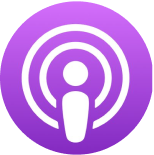Why You Should Consider Embracing the Power of Checklists at Work
Author Atul Gawande Shares How Almost Any Team or Workplace Can Benefit from Using Checklists
A checklist might seem like a remedial tool for a novice employees. But according to author and surgeon Atul Gawande, comprehensive checklists can help organizations from hospitals to airlines improve efficiency, quality, safety, and innovation. And he has the research to prove it.
Wondering whether this often-undervalued tool could improve your workplace? Keep reading!
What Kinds of Tasks Are Best Suited for Checklists?
While almost any workplace can benefit from checklists, they’re best suited for four types of tasks:
- Complex: Involve multiple steps or the need to track large amounts of information.
- Repetitive: Require the same steps to be performed frequently and consistently.
- Safety-critical: Could cause harm if not performed correctly.
- Collaborative: Involve multiple team members or departments working together.
Why Are Checklists So Helpful in the Workplace?
The versatile checklist can ease the burden of complex, repetitive, collaborative, or safety-critical tasks in several ways:
Ensure Consistency and Completeness
Even the most skilled, well-trained, and experienced professionals can unknowingly skip critical steps when they’ve done the same job hundreds of times. Checklists help by providing clear, step-by-step instructions to complete specific tasks in reliable ways.
Minimize Risk When the Stakes are High
Checklists force employees to pause and confirm that they’ve completed tasks correctly. Slowing down safeguards workers, customers, and patients in chaotic environments where one misstep could result in harm or even death.
Promote Clarity and Communication
Checklists break down complex tasks into manageable steps, making them easier to understand and execute. Plus, anyone can verify completion, regardless of tenure or status.
Increase Accountability and Collaboration
Checklists keep everyone working from the same set of instructions. When multiple teams or employees must collaborate on a particular project, checklists minimize repeat meetings, remove ego from the equation, and effectively delegate responsibilities.
Capture Best Practices and Insights
Checklists give teams common language and a point of reference for discussions on possible improvements and innovations.
The Four Key Components of Any Good Checklist
In The Checklist Manifesto, Gawande reveals that any good checklist should have four key components:
- Simplicity: A checklist should be simple, easy to use, and easy to understand. It should be brief, with no unnecessary information or steps.
- Clarity: A checklist should be clear and unambiguous, with each step described in a specific, measurable, and actionable way.
- Generality: A checklist should be general enough to be applicable to a wide range of situations, but also specific enough to be useful in a particular context.
- Flexibility: A checklist should be flexible, allowing for customization and adaptation to different situations and as new information becomes available.
Gawande also emphasizes that a good checklist should be a living document, which is regularly reviewed, refined, and updated to ensure it remains effective over time.
Reflect and Apply
Can you think of a task in your workplace that might be safer, more efficient, or less stressful with a checklist? Tell us where you’ll be applying The Checklist Manifesto to your team or processes on Twitter using #ChecklistManifesto.









.webp)

.webp)
